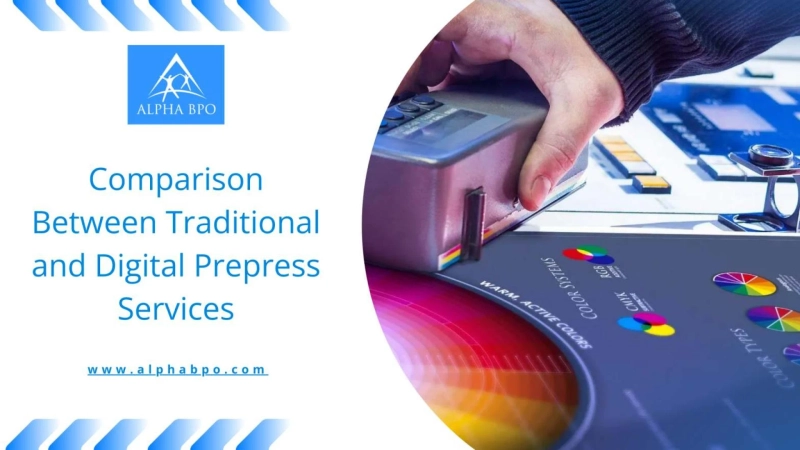The development of digital technologies has transformed the prepress stage in the dynamic world of print manufacturing, giving rise to digital prepress services. Traditional techniques of preparing files for printing were sometimes time-consuming, labor-intensive, and error-prone. On the other hand, prepress services have seen a remarkable metamorphosis, with cutting-edge digital tools and software integration speeding workflows, increasing productivity, and elevating overall print quality.
This article delves into a comprehensive comparison between traditional and digital prepress services, shedding light on the advantages, drawbacks, and exciting potential of this technological evolution in the print industry. Whether you are a seasoned expert looking to optimize prepress processes or a curious individual keen to learn about the latest advances in print technology, this examination of digital prepress services will undoubtedly provide significant insights and a glimpse into the future of print production.
Why is Prepress Necessary?
After a designer generates a document, it must go through a rigorous review process to guarantee alignment with the original goal. This comprehensive review involves scrutinizing elements like fonts, colors, and images to guarantee they accurately reflect the designer's creative intent. The document may undergo updates and revisions iteratively to maintain fidelity to the initial concept.
Even after the review stage, the document requires further scrutiny to preserve its integrity and faithfulness to the designer's vision. At this critical juncture, prepress solutions companies in India step in to play a pivotal role. These companies engage in in-depth discussions with the author, seeking to comprehend the creative objectives behind the document fully.
By collaborating closely with the author, prepress solutions companies can ensure that every aspect of the document aligns with the desired outcome. They take great care in preserving the artistic intent during the prepress stage, making necessary adjustments to optimize the document for printing without compromising its original vision.
The Evolution of Traditional Prepress to Digital Prepress
The advent of desktop publishing has significantly transformed the printing and publishing industry, making it virtually impossible for today's professionals to imagine working in the traditional print era. However, it's fascinating to recognize that a thriving printing industry existed well before the digital press era, proficiently handling tasks that digital presses now perform. Technological advancements brought a new era of technology-driven printing, ultimately replacing traditional methods.
Desktop publishing emerged in the early 1980s, and as the 21st century progressed, it expanded exponentially, forever altering the landscape of printing and publishing. Large commercial organizations in the past relied on a plethora of skilled individuals, each allocated to unique jobs that required skills in managing specialized tools for various components of the printing process. It was a labor-intensive and intricate affair.
Yet, technology disrupted this status quo, revolutionizing the entire industry. Today, a single individual can efficiently manage the printing process thanks to the power of desktop publishing. This shift has democratized printing and publishing, empowering individuals and smaller entities to engage in high-quality production without needing vast resources or an extensive workforce.
Differences Between Traditional and Digital Prepress
The prepress stage is vital in printing and publishing, bridging design conception and final production. While both traditional and digital prepress have the same basic goal of preparing files for printing, the methods and tools used differ dramatically. Here, we explore the contrasting aspects of traditional and digital prepress:
Design Process
The design process in both traditional and digital prepress begins with conception, which involves identifying the project's goal, budget, and appearance. However, digital prepress offers a significant advantage with technology, allowing designers to generate multiple versions simultaneously, making the design exploration more efficient.
Typesetting
Designers submitted text and type specifications to a typesetter, who placed the information on a paste-up board in traditional prepress. In contrast, digital prepress eliminates the need for a separate typesetter and paste-up process, as the designer gains full control over the type, enabling easy manipulation, formatting, and experimentation.
Images
Traditional prepress relied on traditional photographic processes to handle images, involving photographs, cropping, enlarging, or reducing them before placement on a paste-up board. Digital prepress, however, empowers designers to work directly with digital images, allowing for flexible editing, cropping, scaling, and enhancement within the image editing software.
File Preparation
In traditional prepress, the paste-up board served as the initial layout, which was then captured with a camera to create negatives. These negatives were further used for plate creation and subsequent printing. On the other hand, Outsource digital prepress involves direct digital file preparation, eliminating the need for physical paste-up boards and enabling more streamlined processes like imposition within the software.
Proofing
Traditional prepress required careful proofreading of printed pages and any errors necessitated the time-consuming process of creating new negatives and replacing erroneous elements before reprinting. In contrast, digital prepress allows for easy and quick printing of interim copies, facilitating error identification and correction before committing to final production.
Printing
Traditional and digital prepress can involve similar printing processes like paste-up, film, flats, plates, and final printing. However, digital prepress expands the possibilities by enabling direct output from digital files to film, eliminating several intermediate steps and increasing overall efficiency.
Related Posts: Common Mistakes to Avoid in Digital Prepress
Conclusion
Both traditional and digital prepress services have their unique benefits and drawbacks. Traditional prepress services, though slower and more manual, have proven reliable over time, especially for larger-scale print runs. Meanwhile, digital prepress services are more efficient, easier to modify, and cost-effective, making it a practical choice for smaller print jobs. Ultimately, the choice between traditional and digital prepress services depends on the project's specific needs and requirements. In the ever-evolving landscape of printing technology, prepress companies must remain adaptable and adept at traditional and digital methods to provide the best possible service.


